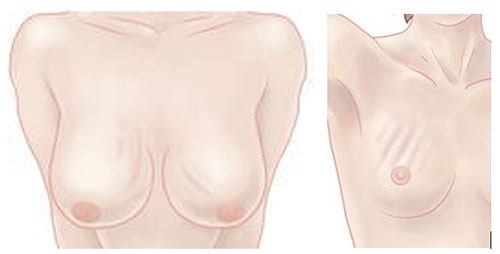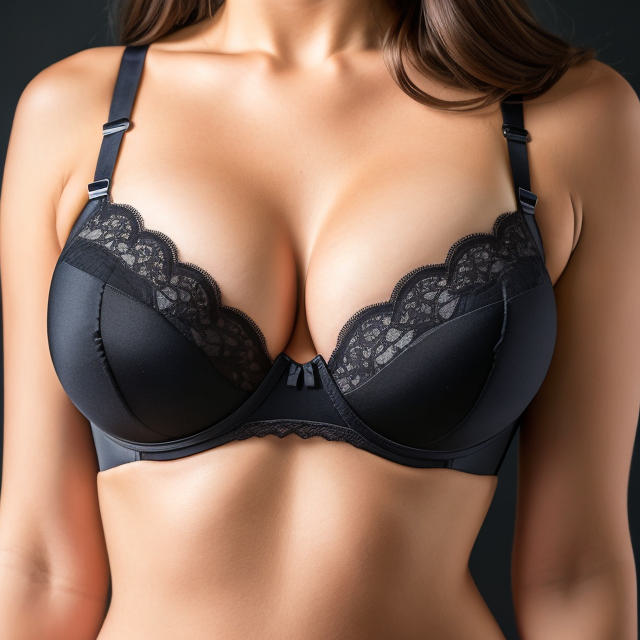Saline Breast Implants Rippling: Prevention & Correction Guide
Posted on: April 7, 2024
Understanding Implant Rippling Causes
Saline Nature
Saline breast implants are more prone to rippling than silicone ones. This is due to the water-like consistency of saline, which can’t mimic natural breast tissue as well and may lead to breasts surface issues such as implant rippling in plastic surgery. When the implant, often used in plastic surgery for breasts, moves or is compressed, it may show ripples through the skin, a complication sometimes addressed with a fascial flap.
This effect, often more visible in cases of women with thinner skin or less breast tissue, can lead to implant rippling, a concern in plastic surgery requiring a fascial flap technique. In cases of plastic surgery within the reconstructive surgery unit, they lack the necessary padding, such as a fascial flap, to conceal the implant’s texture. Consequently, in plastic surgery cases, saline implants require careful consideration regarding placement and size to minimize rippling, often involving a fascial flap technique in a reconstructive surgery unit.
Fill Volumes
Improper fill volumes contribute significantly to rippling. Underfilling a saline implant creates a looser shell, allowing more movement of the saline solution inside. This can lead to scalloping along the edges where the implant isn’t fully expanded, often observed in plastic surgery, particularly when a fascial flap is involved.
Overfilling, on the other hand, in plastic surgery, stretches the implant shell too tight. It might reduce rippling but can lead to an unnatural feel and appearance in plastic surgery, especially with a breast implant. Finding the right balance in plastic surgery is crucial for a natural look and feel while minimizing rippling risks with breast implants.
Size Mismatch
A mismatch between implant size and a woman’s anatomy in plastic surgery can also cause rippling. Large implants on a small frame from plastic surgery strain the skin and tissues, making ripples more apparent.
Choosing an implant that harmonizes with one’s body size and shape is essential. It helps distribute tension evenly across the breast implant surface, reducing stress points that could lead to visible rippling.
Factors Influencing Saline Implant Rippling
Tissue Coverage
Tissue coverage plays a crucial role in the visibility of rippling in saline breast implants. Thin or insufficient tissue coverage over the implant can make the edges and ripples of the implant more visible through the skin. This is particularly true for patients who have undergone mastectomies or those with naturally thin skin, especially when considering breast implant procedures where implant rippling can occur.
Patients should consider their existing tissue thickness when choosing saline implants. Adequate tissue coverage acts as a natural layer that camouflages the implant’s texture, reducing the chances of noticeable rippling.
Implant Placement
The placement of saline implants significantly affects rippling visibility. Specifically, subglandular placement—where the implant is placed over the muscle but under the gland—increases the risk of rippling becoming visible. This method leaves less tissue between the implant and the skin, making any irregularities easier to spot.
Submuscular placement, on the other hand, offers an additional layer of muscle over the implant. This can help mask implant rippling, especially in patients with minimal natural breast tissue.
Body Type
Body type is a critical factor in how noticeable rippling might be with saline implants. Thin or small-breasted women often have less natural breast tissue to cover and cushion the implant. For these breast implant patients, rippling may be more pronounced, as there’s less material to hide any imperfections.
Choosing an implant size and shape that harmonizes with one’s body type can mitigate some risks of rippling. It’s essential for patients considering breast implant surgery to have realistic expectations and discuss their concerns, such as implant rippling, with their surgeon.
Preventing Rippling with Implant Choices
Size Harmony
Choosing implant sizes and shapes that match the patient’s natural anatomy is key. This minimizes skin tension, which can lead to implant rippling. It’s crucial to have a detailed consultation with your surgeon about breast implant options and the risk of implant rippling. They’ll help pick the right size for you.
Implants too large for the body frame are more prone to ripple. The edges of implant rippling may become visible, especially in thinner areas of breast tissue.
Material Matters
Silicone implants or highly cohesive options are often recommended for those worried about rippling. These materials tend to mimic natural breast tissue more closely than saline solutions, reducing the risk of implant rippling.
Highly cohesive silicone gel implants maintain their shape better. They reduce the risk of implant edges being felt or seen through the skin.
Proper Filling
Correct implant filling is vital. Avoid extreme overfilling or underfilling saline implants to minimize rippling risks. Each type of implant has a recommended fill range for optimal results.
Overfilled implants can stretch the shell, making it more palpable and visible. Underfilled ones might fold, increasing rippling chances.

Importance of Implant Placement
Submuscular Benefits
Implant placement plays a crucial role in minimizing the risk of rippling. Placing implants beneath the muscle, particularly for those with less natural breast tissue, significantly reduces this risk. This approach provides better tissue coverage and support, essential for a smoother appearance and reducing breast implant rippling.
Surgeons often recommend submuscular placement for breast implant patients concerned about rippling. This method offers enhanced coverage over the inferolateral aspect of the implant. It’s an area prone to rippling when not adequately covered, especially in the context of a breast implant.
Surgical Considerations
Choosing the right implant placement is a balancing act. Surgeons must weigh aesthetic desires against potential complications like rippling in breast implant procedures. They consider factors such as body type, breast size, skin elasticity, and implant rippling.
For many, submuscular placement is ideal. It not only supports the implant but also ensures a more natural look and feel. However, each patient’s case is unique. Surgeons tailor their approach based on individual needs and goals, including addressing concerns like breast implant size or preventing implant rippling.
Exploring Breast Revision Surgery
Revision Options
Breast revision surgery emerges as a vital solution for women experiencing rippling with their saline breast implants. This procedure allows for adjustments in implant size, type, or placement. It aims to enhance the appearance of the breasts and tackle rippling issues.
Surgeons may opt to replace saline implants with options that better match the patient’s anatomy and desires. They might also adjust the implant’s location, moving it beneath the chest muscle for a more natural look. These changes can significantly reduce the visibility of rippling.
Surgical Evaluation
A thorough evaluation by a skilled cosmetic surgeon is crucial before undergoing breast implant revision surgery to address issues like implant rippling. The surgeon will examine the current state of the implants, natural breast tissue, and overall chest anatomy. This step ensures they choose the most effective surgical techniques.
The assessment might reveal if there’s a need to alter the implant’s position or switch to a different type. For instance, placing it under the serratus muscle or adjusting its position in relation to the upper pole can offer better results over time. Each woman’s body is unique, making personalized evaluation essential.
Preventive Measures
Prevention plays a key role in addressing implant rippling through revision surgery. Surgeons leverage advanced reconstructive surgery units and techniques to minimize future issues. They focus on optimizing implant choice and placement based on individual anatomy and tissue characteristics.
Understanding these factors helps in selecting implants that harmonize with one’s body, reducing the chances of rippling post-surgery. It underscores why many women consider revision as a pathway to achieving their desired aesthetic outcomes with confidence.
Corrective Procedures for Rippling
Fat Grafting
Fat grafting stands as a viable solution to increase tissue coverage over the implant, thereby lessening the visibility of rippling. This method involves harvesting fat from another part of the patient’s body. It is then carefully injected around the breast implant. The added layer of natural fat acts as a cushion, smoothing out irregularities and providing a more natural look and feel.
Patients often notice a significant reduction in rippling after this procedure. However, it’s crucial to have realistic expectations about the outcome.
Implant Switch
Switching from saline to silicone implants offers another route to address rippling issues. Silicone implants are generally softer and tend to have a more natural feel than their saline counterparts. Because of their cohesive gel interior, they are less prone to rippling.
This switch can make a dramatic difference for patients struggling with the aesthetic limitations of saline implants. Consulting with a skilled surgeon is key to determining if this option suits your specific needs.
Placement Adjustment
Adjusting the placement of an implant from subglandular (above the muscle) to submuscular (below the muscle) serves as an effective corrective measure. This repositioning strategy enhances tissue coverage over the implant, significantly reducing the chances of rippling.
The procedure requires precision and understanding of breast anatomy but has proven beneficial for many patients seeking relief from rippling issues.
Finding a Reliable Cosmetic Surgeon
Board Certification
Choosing a board-certified cosmetic surgeon is crucial. They have undergone rigorous training in plastic surgery, including breast augmentation and revision procedures.
Patients should prioritize surgeons with a proven track record. This ensures they are in capable hands, especially for addressing concerns like rippling. Experience matters when dealing with the delicate balance between skin, fat grafting, and implant placement.
Gallery Review
Examining before-and-after photos is essential. It offers insight into the surgeon’s skill in correcting rippling issues. Look for patients with similar body types to gauge realistic outcomes.
This step helps set expectations. It also demonstrates the surgeon’s ability to enhance appearance while maintaining natural tissues’ integrity.
Consultation Importance
Meeting with multiple surgeons is advisable. It allows patients to discuss their concerns and desired look openly.
During consultations, inquire about the surgeon’s approach to minimizing rippling risks. Techniques may vary from using fascial flaps to adjusting the implant plane or edges. Understanding these methods can reassure patients about their choice.
Closing Thoughts
Rippling in saline breast implants can be a concern, but understanding its causes and knowing how to minimize risks is key. You’ve learned about factors influencing rippling, the importance of implant choices and placement, and options for correction through breast revision surgery. Choosing a reliable cosmetic surgeon is crucial for achieving your desired outcomes. This information empowers you to make informed decisions for your body and health. Don’t settle; seek out expertise and care that align with your goals. Ready to take the next step? Contact a reputable cosmetic surgeon today and discuss your options for a confident tomorrow.
Frequently Asked Questions
What causes saline breast implants to ripple?
Implant rippling occurs when the saline solution inside the implant isn’t fully filled or due to thin breast tissue covering the implant, making the edges or folds visible through the skin.
How can I minimize the risk of rippling with saline implants?
Choosing the right implant size and type, ensuring proper filling during surgery, and opting for placement under the muscle can significantly reduce rippling risks.
Is it possible to prevent rippling entirely with certain implant choices?
While no method guarantees complete prevention, selecting structured saline implants or considering silicone options, and discussing optimal placement strategies with your surgeon can greatly diminish rippling chances.
Why is implant placement important for reducing rippling?
Implant placement beneath the muscle offers better coverage and support, diminishing the likelihood of visible rippling compared to subglandular (above muscle) placements.
Can breast revision surgery correct existing rippling?
Yes, breast revision surgery can address rippling by adjusting implant size, type, or position, or by adding tissue matrix products to provide more coverage over the implant.
What are some corrective procedures for implant rippling?
Corrective options include changing to a different type or size of implant, repositioning the implant under the muscle if not already done so, or using fat grafting to increase soft tissue coverage.
How do I find a reliable cosmetic surgeon for my procedure?
Look for board-certified plastic surgeons with extensive experience in breast augmentation and revision surgeries. Check their before-and-after galleries and read patient reviews to gauge their expertise and results.





